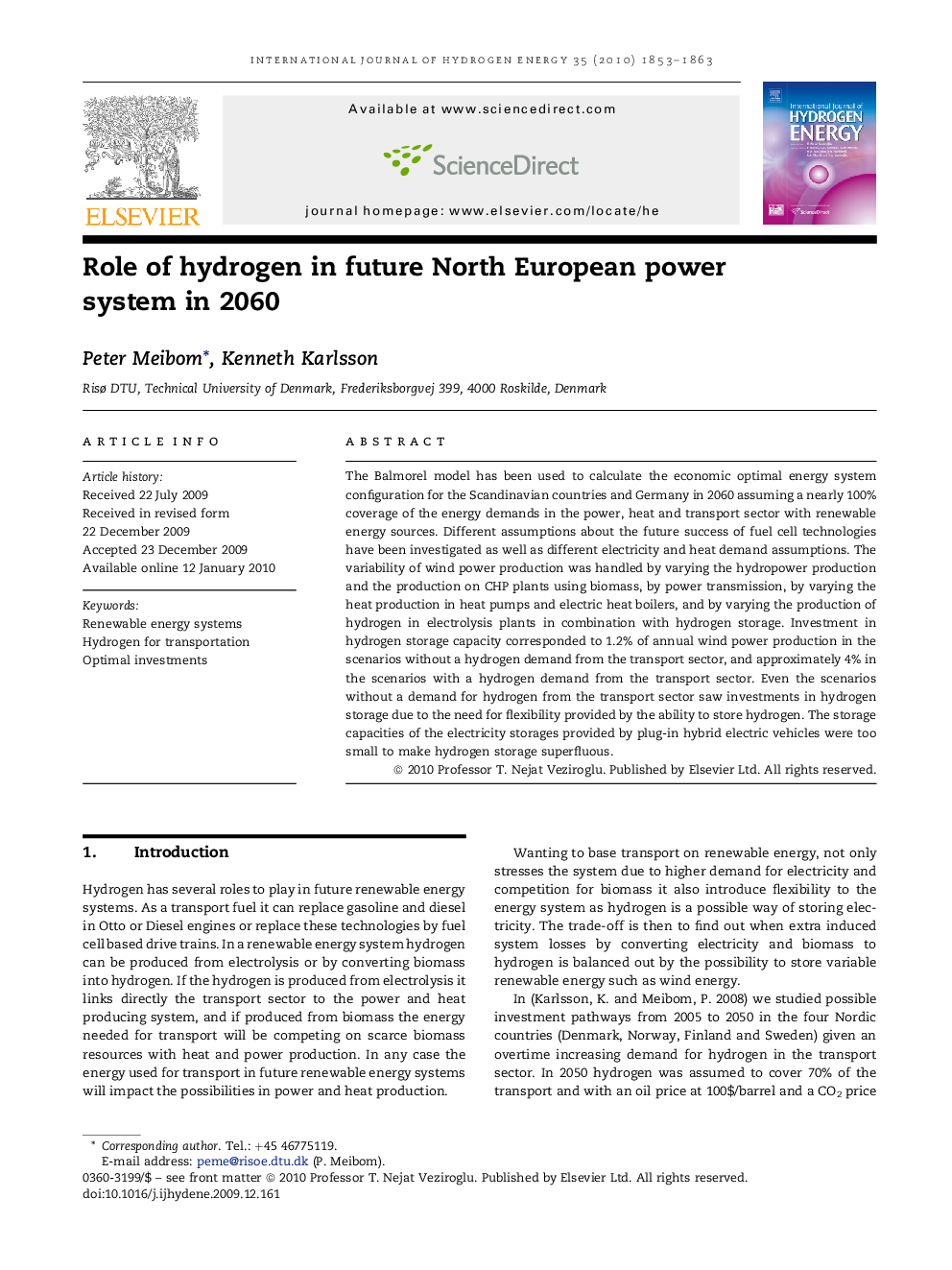| Article ID | Journal | Published Year | Pages | File Type |
|---|---|---|---|---|
| 1280890 | International Journal of Hydrogen Energy | 2010 | 11 Pages |
The Balmorel model has been used to calculate the economic optimal energy system configuration for the Scandinavian countries and Germany in 2060 assuming a nearly 100% coverage of the energy demands in the power, heat and transport sector with renewable energy sources. Different assumptions about the future success of fuel cell technologies have been investigated as well as different electricity and heat demand assumptions. The variability of wind power production was handled by varying the hydropower production and the production on CHP plants using biomass, by power transmission, by varying the heat production in heat pumps and electric heat boilers, and by varying the production of hydrogen in electrolysis plants in combination with hydrogen storage. Investment in hydrogen storage capacity corresponded to 1.2% of annual wind power production in the scenarios without a hydrogen demand from the transport sector, and approximately 4% in the scenarios with a hydrogen demand from the transport sector. Even the scenarios without a demand for hydrogen from the transport sector saw investments in hydrogen storage due to the need for flexibility provided by the ability to store hydrogen. The storage capacities of the electricity storages provided by plug-in hybrid electric vehicles were too small to make hydrogen storage superfluous.
